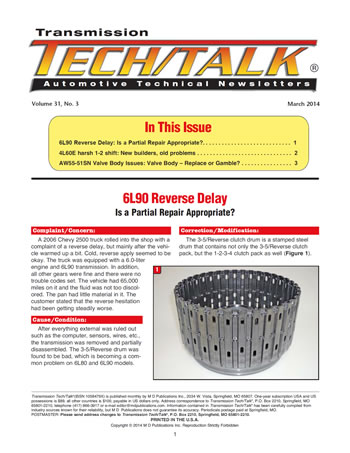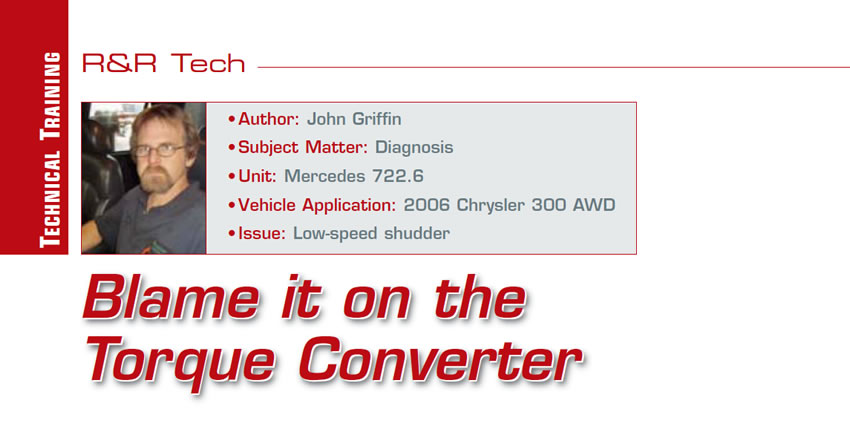Sorry, My Mistake!
Mistakes are a fact of life. No matter how much you try, you can’t completely avoid making them. They can be costly but they shouldn’t cost you your customers if you handle them well. In fact, they can actually help to improve your shop’s effectiveness and reputation if you take great care whenever they occur.

Serviceability Report: Mitsubishi Outlander
Recently Deb, my wife and partner at ACDC, pointed out that I had not covered Mitsubishi in this column. Was it because of the 1985 Galant that sat on my used-car lot for months and then after it was sold the transmission let go during the warranty? Or maybe it was because the Mirage had broken jet valves we hated to service?
I have never been a big fan of this Japanese automaker, but things do change over time. Just look at Ford as it improved and changed its ways over the past 10 years. This time I will break with tradition and compare not the best-selling but the top-of-the-line 2014 Mitsubishi Outlander GT with the 2007 Mitsubishi Outlander XLS. I will try to be fair and let go of the past, but some cars do get on your list.

Bearing Service – the Key to Reliability
All forms of transmissions, transfer cases and differentials use anti-friction bearings to support moving components, reduce parasitic power losses and maintain the parts in their correct positions for long-term reliability. The most-common bearings we see in manual transmissions, transfer cases and differentials fall into several categories of design. Each type will have different design criteria as for operational speed and the ability to handle axial (thrust) and radial loads.

Testing the Speed Sensors in the AW55-50SN Transmission
A 2002 Volvo S60 arrived at our shop with two codes in the TCM: 0023 “Transmission input shaft speed sensor signal missing” and 0089 Transmission input speed sensor, signal too low.” The vehicle was in “limp-home mode,” which allows the transmission to be operated in 3rd and 4th gears only and with high line pressure. The customer had bought the vehicle with these conditions and did not know its history. Visual observation showed that someone had spliced into the speed sensors (Figure 1) and had replaced the transmission with a used one.

A Game of Winners and Losers
As a recruiter I am looking for three things: talent, attitude and a consistent work ethic. There are other attributes to consider, but that is what I am mainly interested in. That is what I think it takes to be a winner. As a recruiter for the shop, I know that If I can recruit people with those three qualities I will have done my job.

The Stigma of Sales
There are two kinds of people in the world – cat people and dog people. Wait, no. That’s not the point of this article. There are two other kinds of people in the world – people who love sales and people who hate sales. And, then, there are those who hate salespeople and those who love salespeople. From my own experience, I have found that there are far more Americans who detest salespeople than there are those who love (or even like) salespeople.

Vacuum Testing GM 4T65-E
From the TASC Force we reprint a series of in-depth test instructions for checking the serviceability of valve bodies.

March 2014 Issue
In This Issue
6L90 Reverse Delay: Is a Partial Repair Appropriate?
4L60E harsh 1-2 shift: New builders, old problems
AW55-51SN Valve Body Issues: Valve Body – Replace or Gamble?

Automatic-Transmission Fluid: What is today’s reality?
Long gone are the simpler times of having just one or two types of transmission fluid. Throughout the 1950s, ’60s and early ’70s, there were basically GM type A or type A “suffix A” and Ford type F. Because of a changing environment, such as increasing engine/transmission temps as well as a fluid-component issue (remember the ban on sperm-whale oil), fluid started to evolve.

Blame it on the Torque Converter
A 2006 Chrysler 300 AWD came into our shop with a shudder concern. The vehicle was equipped with a 5.7-liter hemi engine coupled with a Mercedes 722.6 transmission, and it had 84,751 miles on the clock. The customer brought it to us for a second opinion. Prior to the visit to our shop, the customer had taken the vehicle to a Chrysler dealer for evaluation. The dealer had diagnosed the problem and determined that a torque-converter replacement was in order.

